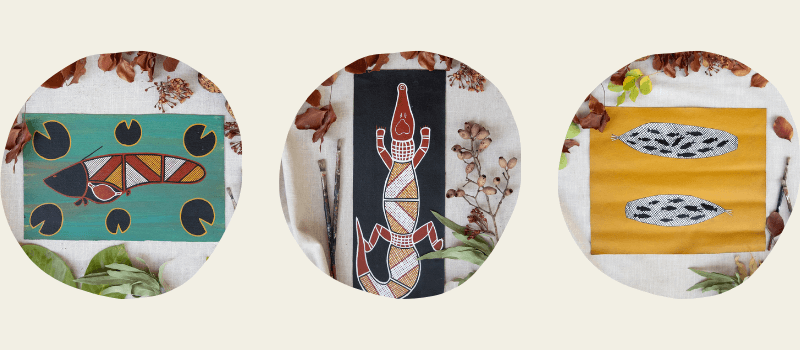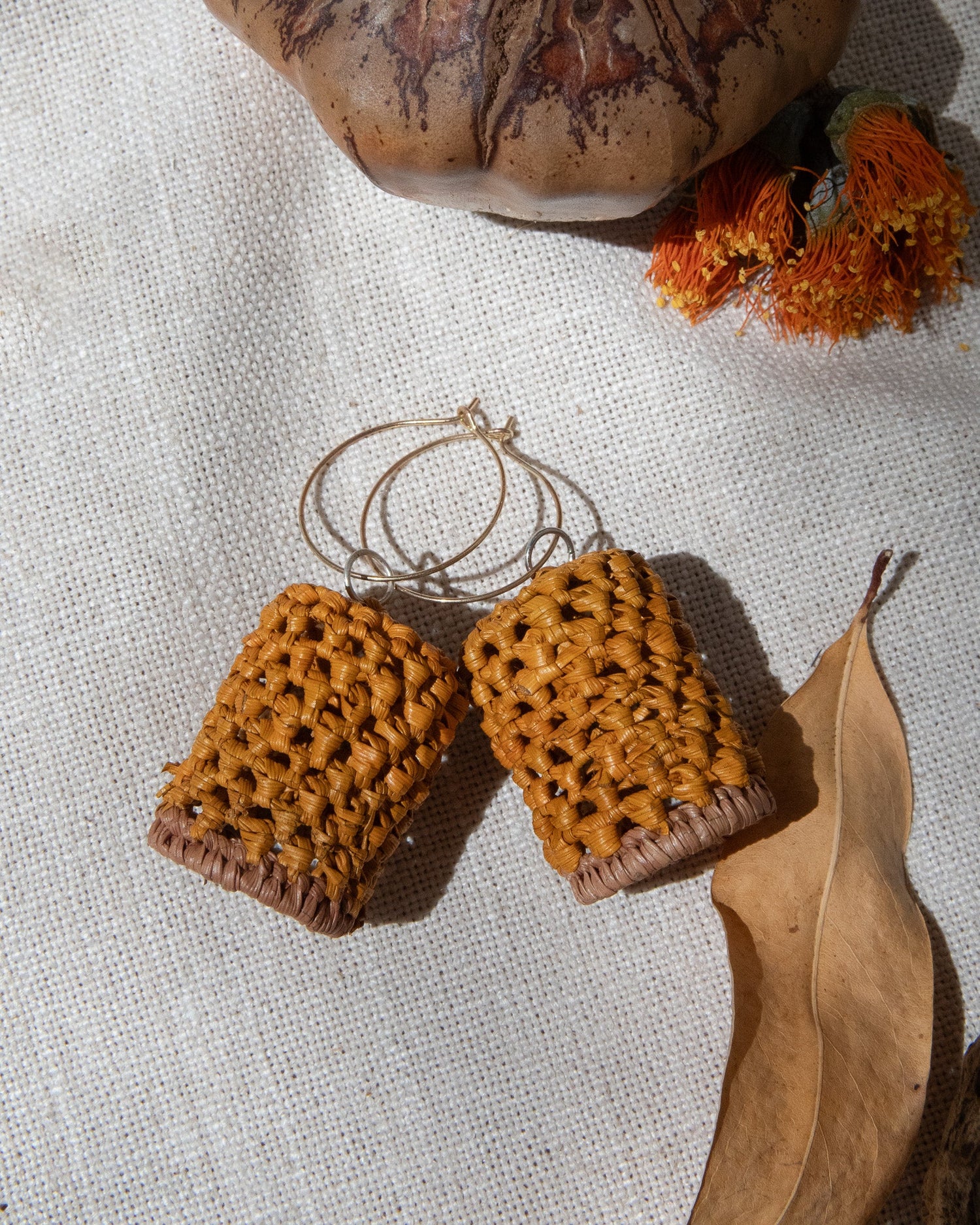
Echoes of Dreamtime: Kakadu's Aboriginal Artistry Explored
Share
Nestled in the heart of the Northern Territory’s rugged beauty lies Kakadu National Park, a UNESCO World Heritage Site and a cradle of ancient traditions. Within this vast expanse of natural wonder thrives a culture steeped in artistry and storytelling—our culture, that ofthe Bininj/Mungguy people, whose artistic legacy is woven with the hues of yellow ochre, red ochre, black ochre, and white ochre.
Aboriginal art across Australia is a mosaic of diverse styles, techniques, and narratives, each region bearing its unique cultural imprint. What sets apart the art of the Bininj/Mungguy people in Kakadu is our deep connection to country, spirituality, and the preservation of ancestral wisdom.
Central to our artistic expression are the earthy pigments—yellow, red, black, and white—that hold profound significance in our cultural lexicon. These colours aren’t merely chosen for their aesthetic appeal but are imbued with stories of creation, landscapes, and ancestral spirits.
Yellow ochre, derived from natural ochre deposits, signifies the sun, representing life and energy. Red ochre, with its variations from red to deep brown, embodies the earth and its richness, symbolising the land and its bounties. Black ochre signifies the night, depicting the unknown, secrets, and spirits that dwell beyond our understanding. White ochre, often sourced from pipe clay, symbolises water, purity, and the spirit world.
The Bininj/Mungguy people’s art is distinguished by our intricate use of these colors, often intertwined in intricate patterns that reflect Dreamtime stories and the spiritual connection to the land. Our art serves as a visual language, conveying knowledge, rituals, and cultural heritage from generation to generation.
A unique aspect of our art is the depiction of ‘x-ray’ style paintings, where the internal organs and bone structures of animals are revealed. This style, prevalent in our region, showcases an intimate understanding of the natural world, reflecting the Bininj/Mungguy people’s deep connection to the land and its creatures. It has also served to help educate our young, acting as a sort of diagnostic chart for our children so that they could learn how to divide up a carcass for food and other uses ensuring sustainability of Country for future generations.
Another distinctive feature of our indigenous art is the incorporation of the cross-hatching painting technique. This method, used with precision and purpose, conveys layers of meaning within the artwork. The intricate patterns tell stories of creation, landscapes, and ancestral spirits, inviting viewers to delve deeper into the rich cultural tapestry of the Bininj/Mungguy people.
Our art within Kakadu is not confined to canvases or galleries; it is etched into the rock faces and cave walls across the landscape. These ancient rock art sites, some dating back thousands of years, depict the spiritual beliefs, daily life, and cultural practices of the Bininj/Mungguy people. Each stroke, each motif, carries a legacy of resilience and reverence for the land, our Country.
The art of the Bininj/Mungguy people in Kakadu and the West Arnhem land people embodies a spiritual journey—a visual testament to our enduring connection to Country, the wisdom of our ancestors, and the vibrant cultural heritage we continue to preserve.
As visitors explore the breathtaking landscapes of Kakadu, you’re not merely witnessing art but experiencing a profound narrative woven into the fabric of the land—a legacy that continues to thrive and inspire awe in the hearts of all who encounter it.
Warradjan Aboriginal Cultural Centre and our online art store provide the opportunity for cultural enthusiasts, history enthusiasts and art enthusiasts to take a treasured piece of Kakadu and West Arnhem Land’s ancient traditions into their own homes.





